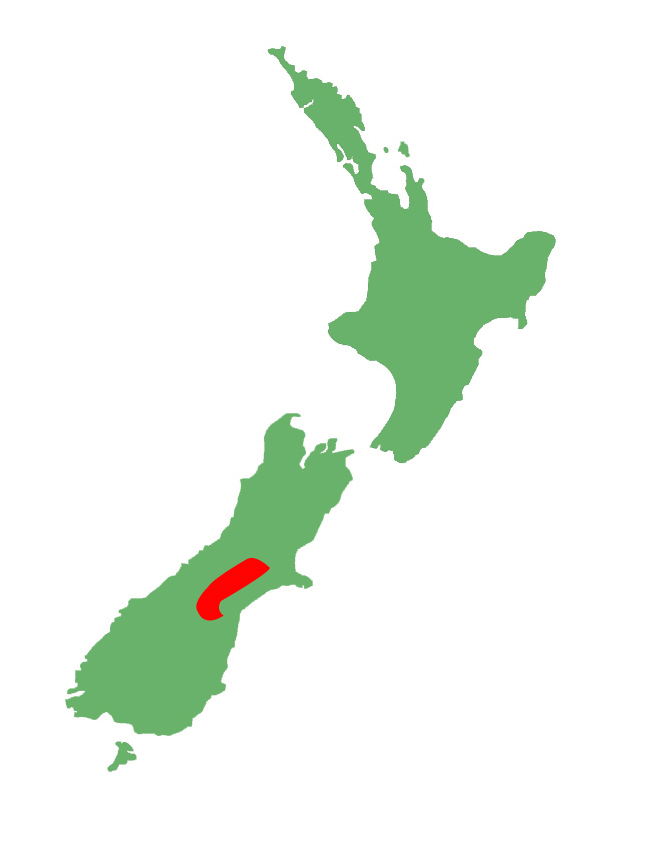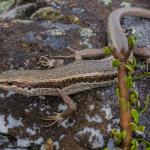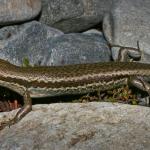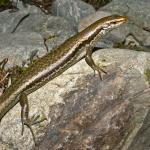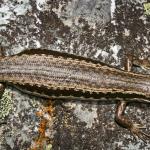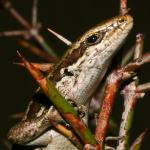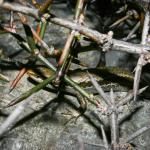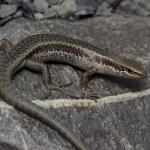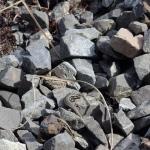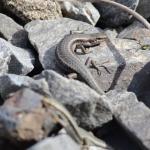- Home
- Herpetofauna Index
- Native
- Oligosoma Aff. Longipes "southern"
Oligosoma aff. longipes "southern"
Roamatimati skink
Oligosoma aff. longipes "southern"
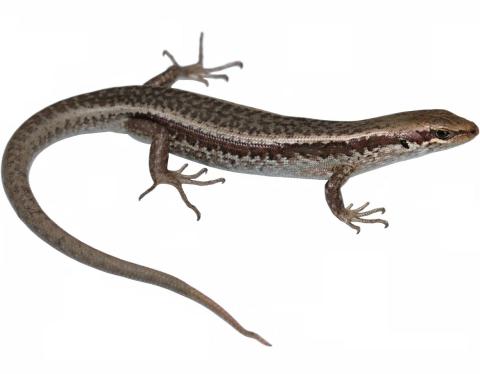
Length: SVL up to 80mm, with the tail being much longer than the body length
Weight: unknown
Description
An active skink species from the rock dominated alpine habitats of inland Canterbury, it is often characterised by its relatively long toes and tail. It is extremely similar in appearance to the closely related Northern long-toed skink (Oligosoma longipes).
The dorsal surfaces of this species are characterised by a grey to brownish-grey colouration, with scattered pale grey, and brown blotching. An indistinct or incomplete brown mid-dorsal stripe may be present. The sides of the animal are comprised of a thin grey dorsolateral stripe running from the ear to the base of the tail, bordered underneath by a notched brown band, which also breaks up at the base of the tail. The lower surfaces of the animal are often a uniform grey but may have dark speckling or flecking in some individuals, particularly on the chin.
Roamatimati skinks are similar in appearance to McCann's skinks (Oligosoma maccanni) and White-bellied skinks (Oligosoma hoparatea), which occur in the same habitat. They can be distinguished from the former by their much longer toes and tail, in combination with the lack of a clear mid-dorsal stripe. Whilst the White-bellied skink by comparison is much larger, and has notched (vs smooth-edged) dorsolateral stripes.
Geographically isolated from the closely related and visually similar Northern long-toed skink (Oligosoma longipes) and Kahurangi skink (Oligosoma kahurangi).
Life expectancy
Unknown
Distribution
Roamatimati skinks are known from several scattered populations from inland Canterbury through to the Mackenzie Basin.
Ecology and habitat
Roamatimati skinks are diurnal and strongly heliothermic, emerging from their rocky retreats to actively hunt when conditions are suitable. They are a saxicolous species spending the majority of their lives in and amongst the rocky habitats in alpine environments (screes, gravel or boulder talus slopes, dry streambeds, and rock piles amongst low growing vegetation).
Social structure
Unknown
Breeding biology
Unknown
Diet
Roamatimati skinks are omnivorous, feeding on all manner of small invertebrates as well as the berries / fruit from native plants.
Disease
Unknown.
Conservation strategy
Roamatimati skinks are currently regarded as 'At Risk - Declining'. This species is not currently being managed.
Interesting notes
Roamatimati skinks are close relatives of the northern long-toed skink (Oligosoma longipes), White-bellied skink (Oligosoma hoparatea) and Kahurangi skink (Oligosoma kahurangi). They occur sympatrically (in the same habitat) with the White-bellied skink (Oligosoma hoparatea), which is also its closest relative.
References
Hitchmough, R.A., Barr, B., Lettink, M., Monks, J., Reardon, J., Tocher, M., van Winkel, D., Rolfe, J. (2016). Conservation status of New Zealand reptiles, 2015; New Zealand threat classification series 17. Wellington: New Zealand Department of Conservation.
Jewell, T. (2011). A photographic guide to reptiles and amphibians of New Zealand. Auckland: New Holland Publishing.
van Winkel, D., Baling, M. & Hitchmough, R. (2018). Reptiles and Amphibians of New Zealand: A field guide. Auckland: Auckland University Press, 376 pp.
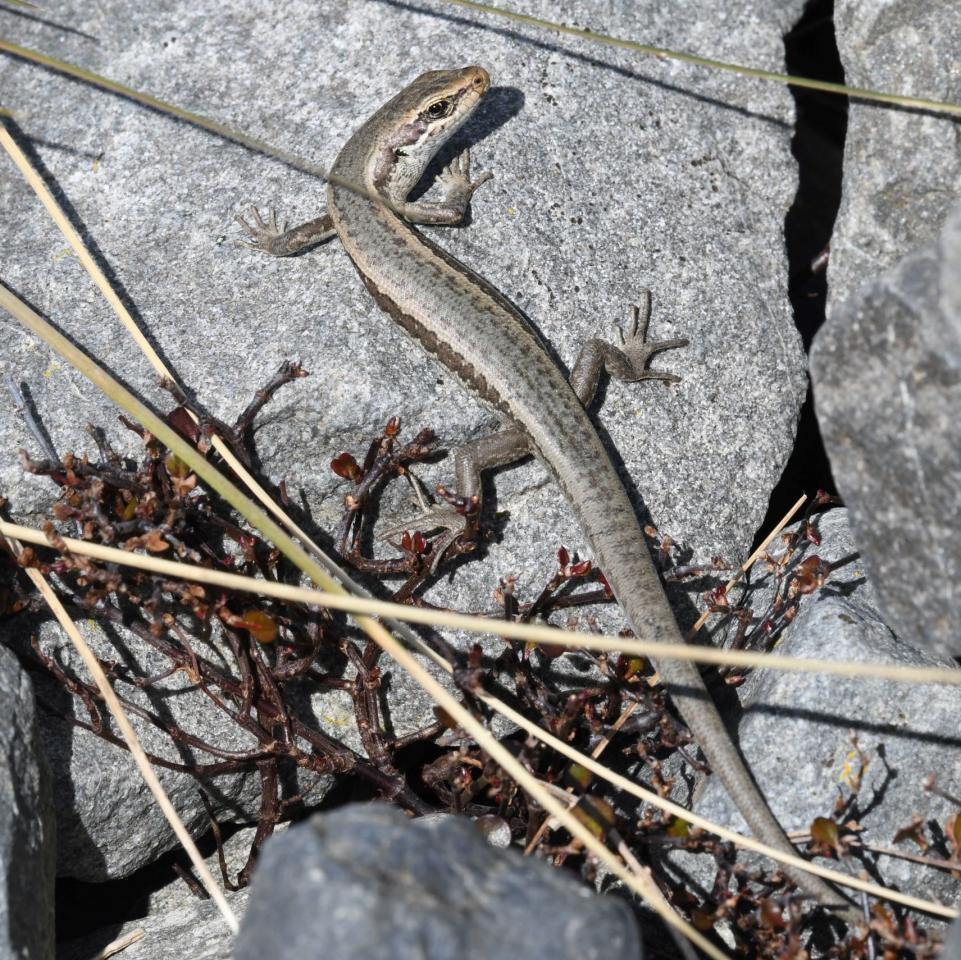
Roamatimati skink basking on loose scree (Lake Coleridge, Canterbury). © Ben Weatherley
